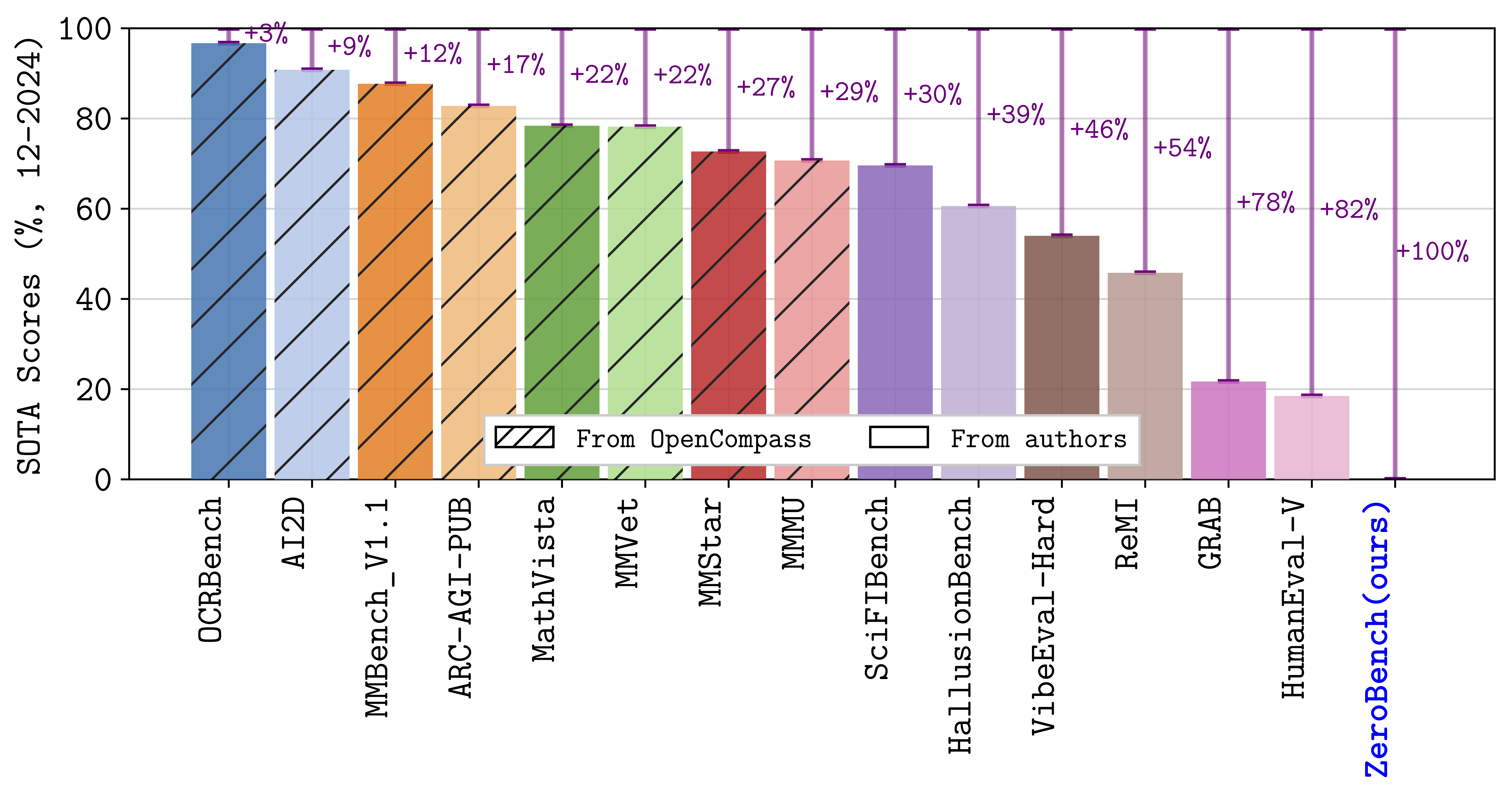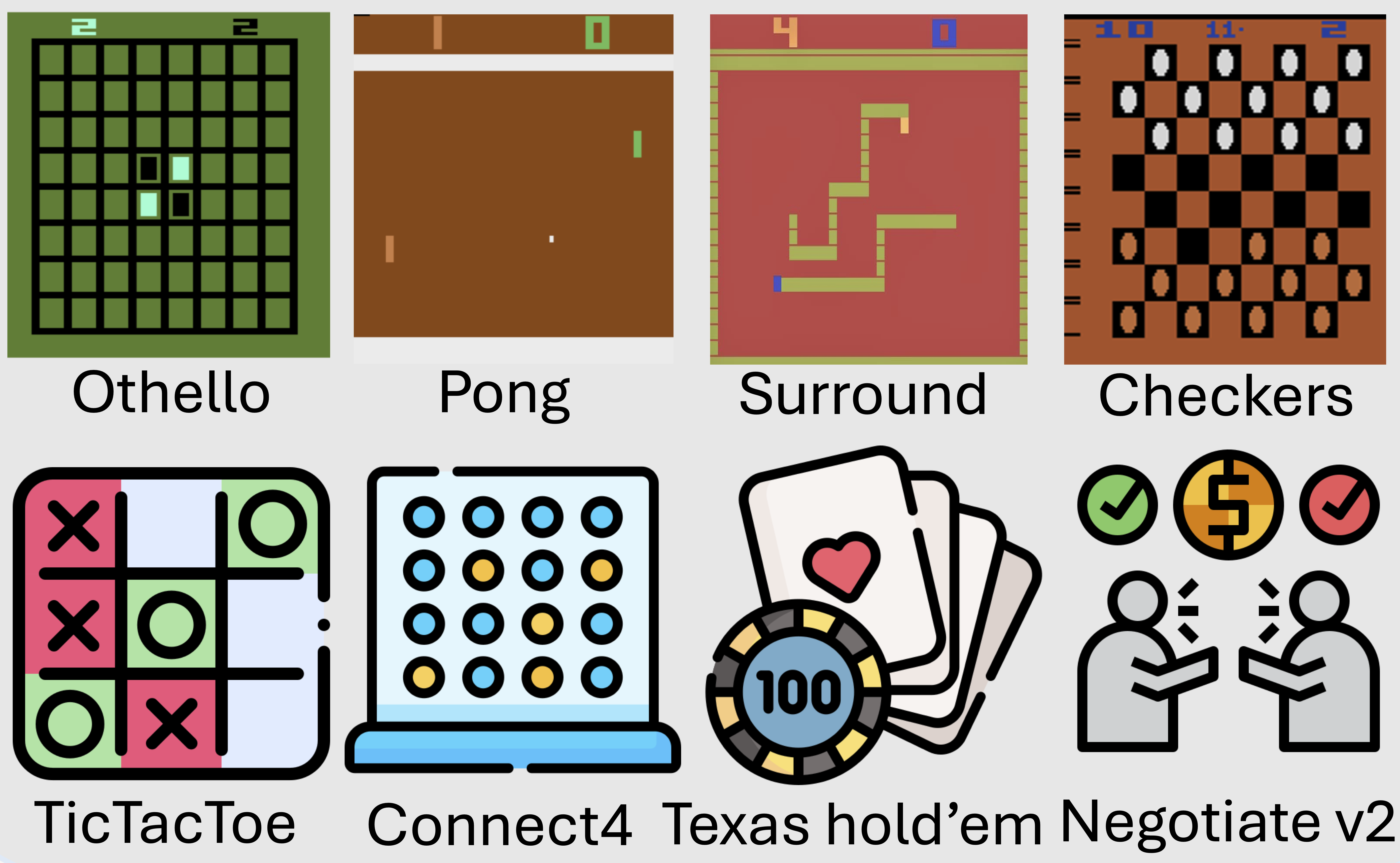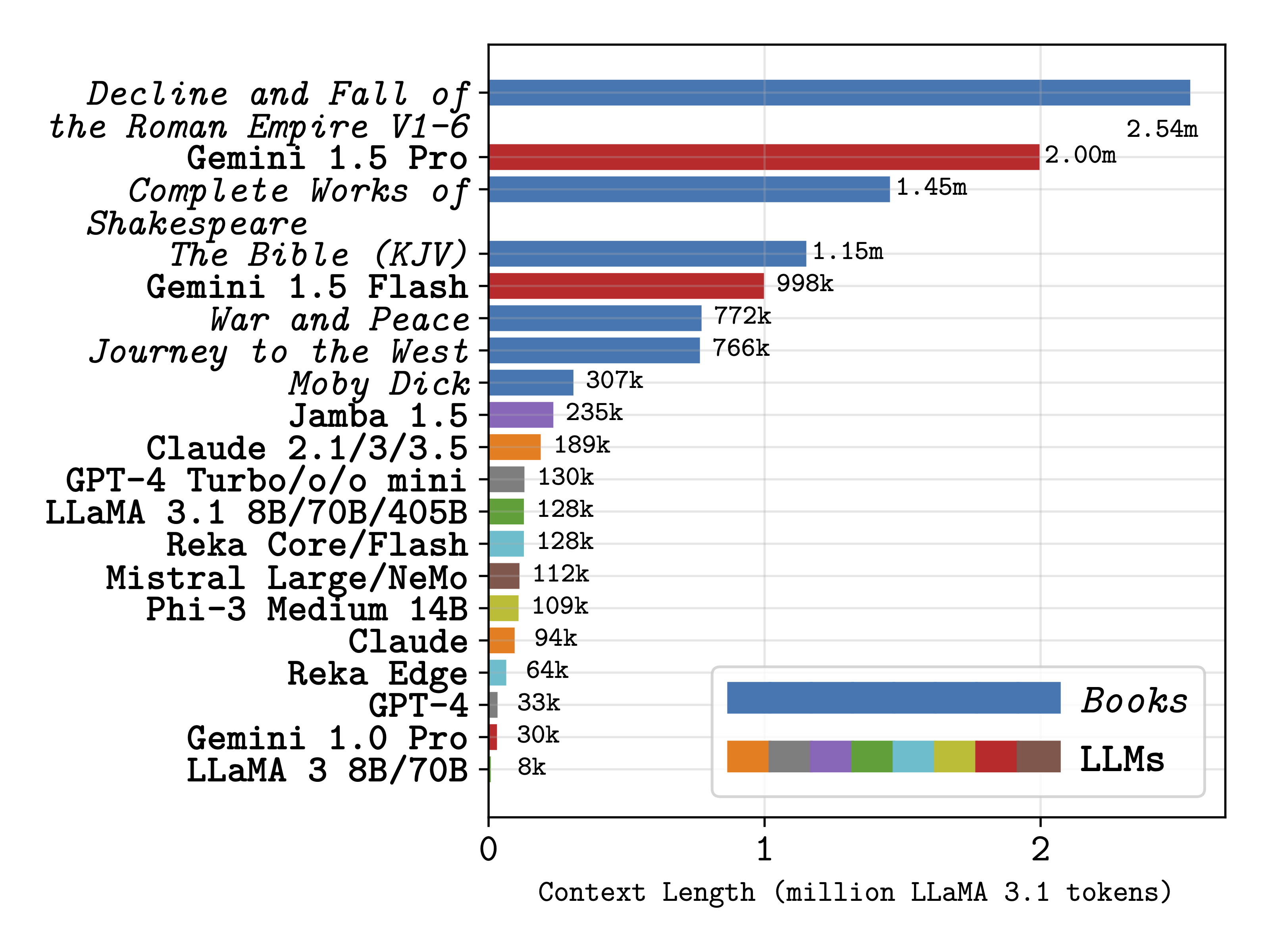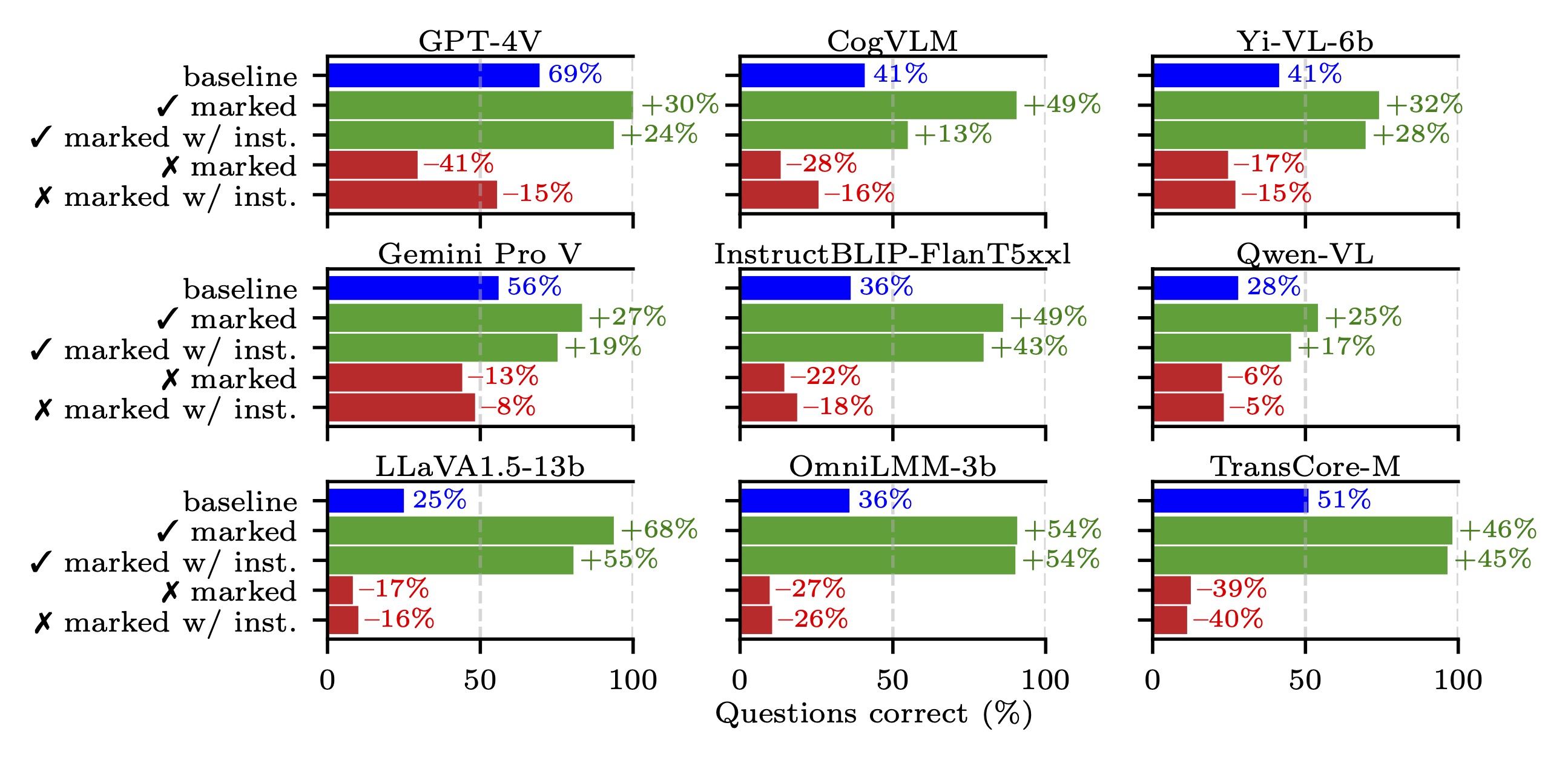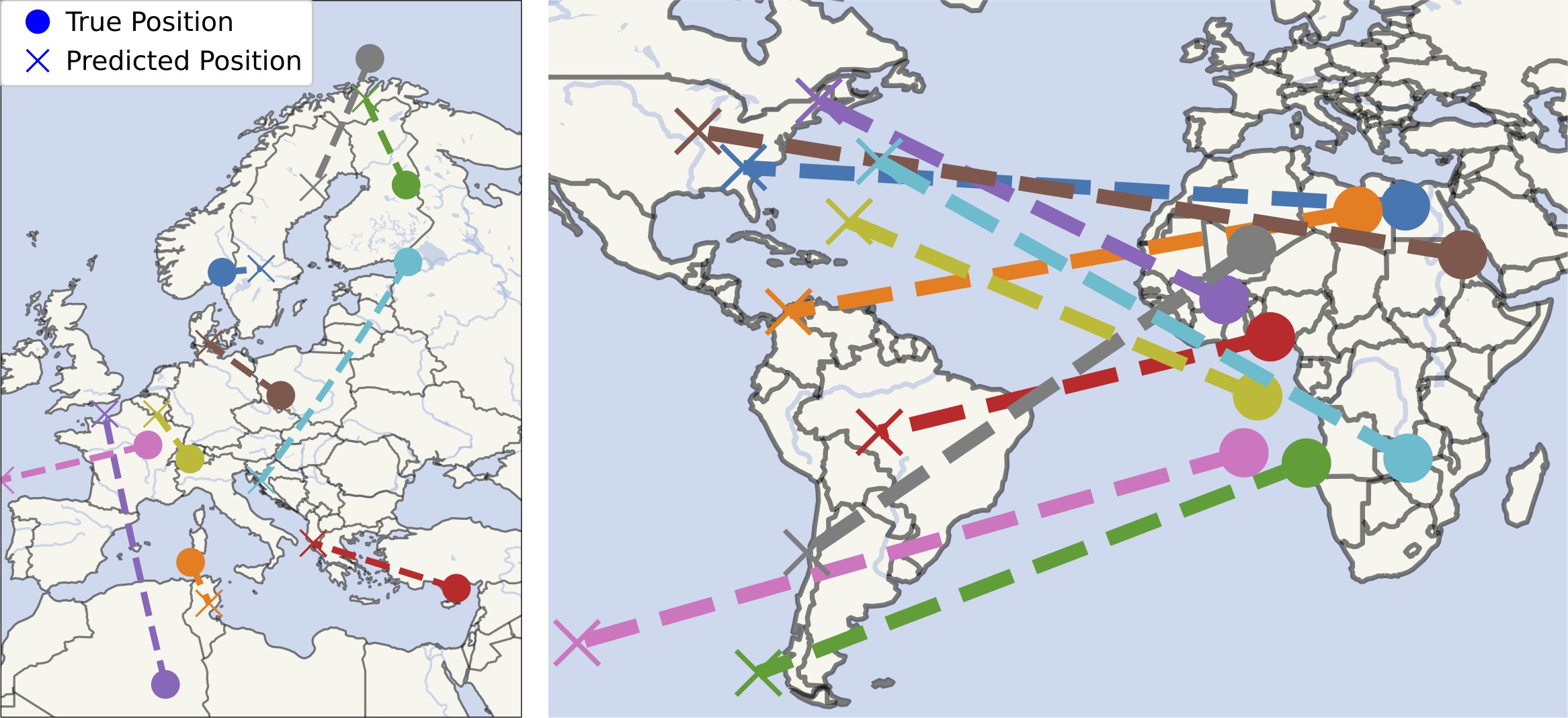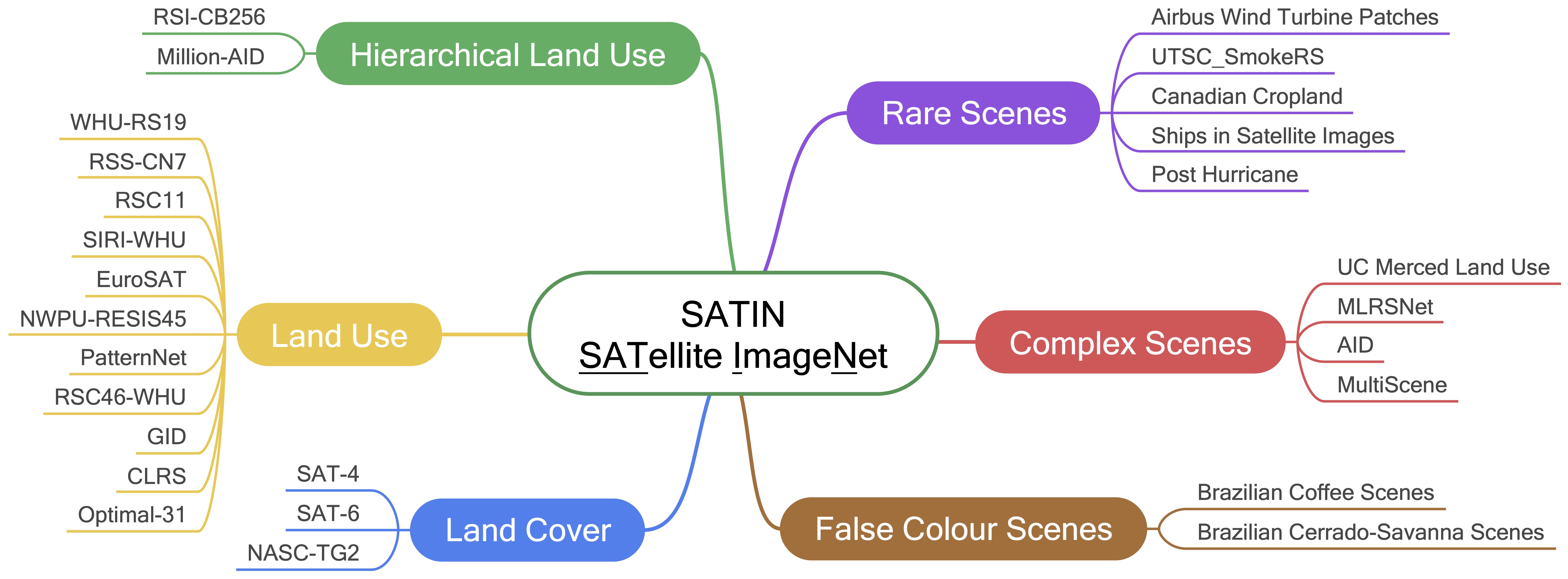publications
2025
- ZeroBench: An Impossible Visual Benchmark for Contemporary Large Multimodal ModelsJonathan Roberts, Mohammad Reza Taesiri, Ansh Sharma, Akash Gupta, Samuel Roberts, and 6 more authorsarXiv preprint arXiv:2502.09696, 2025
Large Multimodal Models (LMMs) exhibit major shortfalls when interpreting images and, by some measures, have poorer spatial cognition than small children or animals. Despite this, they attain high scores on many popular visual benchmarks, with headroom rapidly eroded by an ongoing surge of model progress. To address this, there is a pressing need for difficult benchmarks that remain relevant for longer. We take this idea to its limit by introducing ZeroBench—a lightweight visual reasoning benchmark that is entirely impossible for contemporary frontier LMMs. Our benchmark consists of 100 manually curated questions and 334 less difficult subquestions. We evaluate 20 LMMs on ZeroBench, all of which score 0.0%, and rigorously analyse the errors. To encourage progress in visual understanding, we publicly release ZeroBench at https://zerobench.github.io/.
- Beyond Outcomes: Transparent Assessment of LLM Reasoning in GamesWenye Lin, Jonathan Roberts, Yunhan Yang, Samuel Albanie, Zongqing Lu, and 1 more authorACL, 2025
Large Language Models (LLMs) are increasingly deployed in real-world applications that demand complex reasoning. To track progress, robust benchmarks are required to evaluate their capabilities beyond superficial pattern recognition. However, current LLM reasoning benchmarks often face challenges such as insufficient interpretability, performance saturation or data contamination. To address these challenges, we introduce GAMEBOT, a gaming arena designed for rigorous and transparent assessment of LLM reasoning capabilities. GAMEBOT decomposes complex reasoning in games into predefined modular subproblems. This decomposition allows us to design a suite of Chain-of-Thought (CoT) prompts that leverage domain knowledge to guide LLMs in addressing these subproblems before action selection. Furthermore, we develop a suite of rule-based algorithms to generate ground truth for these subproblems, enabling rigorous validation of the LLMs’ intermediate reasoning steps. This approach facilitates evaluation of both the quality of final actions and the accuracy of the underlying reasoning process. GAMEBOT also naturally alleviates the risk of data contamination through dynamic games and head-to-head LLM competitions. We benchmark 17 prominent LLMs across eight games, encompassing various strategic abilities and game characteristics. Our results suggest that GAMEBOT presents a significant challenge, even when LLMs are provided with detailed CoT prompts. Project page: https://visual-ai.github.io/gamebot/.
- Needle Threading: Can LLMs Follow Threads through Near-Million-Scale Haystacks?Jonathan Roberts, Kai Han, and Samuel AlbanieICLR, 2025
As the context limits of Large Language Models (LLMs) increase, the range of possible applications and downstream functions broadens. In many real-world tasks, decisions depend on details scattered across collections of often disparate documents containing mostly irrelevant information. Long-context LLMs appear well-suited to this form of complex information retrieval and reasoning, which has traditionally proven costly and time-consuming. However, although the development of longer context models has seen rapid gains in recent years, our understanding of how effectively LLMs use their context has not kept pace. To address this, we conduct a set of retrieval experiments designed to evaluate the capabilities of 17 leading LLMs, such as their ability to follow threads of information through the context window. Strikingly, we find that many models are remarkably threadsafe: capable of simultaneously following multiple threads without significant loss in performance. Still, for many models, we find the effective context limit is significantly shorter than the supported context length, with accuracy decreasing as the context window grows. Our study also highlights the important point that token counts from different tokenizers should not be directly compared – they often correspond to substantially different numbers of written characters. We release our code and long-context experimental data.
- GRAB: A Challenging GRaph Analysis Benchmark for Large Multimodal ModelsJonathan Roberts, Kai Han, and Samuel AlbanieICCV, 2025
Large multimodal models (LMMs) have exhibited profi- ciencies across many visual tasks. Although numerous well- known benchmarks exist to evaluate model performance, they increasingly have insufficient headroom. As such, there is a pressing need for a new generation of benchmarks challenging enough for the next generation of LMMs. One area that LMMs show potential is graph analysis, specifically, the tasks an analyst might typically perform when interpreting figures such as estimating the mean, intercepts or correlations of functions and data series. In this work, we introduce GRAB, a graph analysis benchmark, fit for current and future frontier LMMs. Our benchmark is entirely synthetic, ensuring high-quality, noise-free questions. GRAB is comprised of 2170 questions, covering four tasks and 23 graph properties. We evaluate 20 LMMs on GRAB, finding it to be a challenging benchmark, with the highest performing model attaining a score of just 21.7%. Finally, we conduct various ablations to investigate where the models succeed and struggle. We release GRAB to encourage progress in this important, growing domain.
2024
- SciFIBench: Benchmarking Large Multimodal Models for Scientific Figure InterpretationJonathan Roberts, Kai Han, Neil Houlsby, and Samuel AlbanieNeurIPS, 2024
Large multimodal models (LMMs) have proven flexible and generalisable across many tasks and fields. Although they have strong potential to aid scientific research, their capabilities in this domain are not well characterised. A key aspect of scientific research is the ability to understand and interpret figures, which serve as a rich, compressed source of complex information. In this work, we present SciFIBench, a scientific figure interpretation benchmark consisting of 2000 questions split between two tasks across 8 categories. The questions are curated from arXiv paper figures and captions, using adversarial filtering to find hard negatives and human verification for quality control. We evaluate 28 LMMs on SciFIBench, finding it to be a challenging benchmark. Finally, we investigate the alignment and reasoning faithfulness of the LMMs on augmented question sets from our benchmark. We release SciFIBench to encourage progress in this domain.
- Charting New Territories: Exploring the Geographic and Geospatial Capabilities of Multimodal LLMsJonathan Roberts, Timo Lüddecke, Rehan Sheikh, Kai Han, and Samuel AlbanieIn Proceedings of the IEEE/CVF Conference on Computer Vision and Pattern Recognition Workshops, 2024
Multimodal large language models (MLLMs) have shown remarkable capabilities across a broad range of tasks but their knowledge and abilities in the geographic and geospatial domains are yet to be explored, despite potential wide-ranging benefits to navigation, environmental research, urban development, and disaster response. We conduct a series of experiments exploring various vision capabilities of MLLMs within these domains, particularly focusing on the frontier model GPT-4V, and benchmark its performance against open-source counterparts. Our methodology involves challenging these models with a small-scale geographic benchmark consisting of a suite of visual tasks, testing their abilities across a spectrum of complexity. The analysis uncovers not only where such models excel, including instances where they outperform humans, but also where they falter, providing a balanced view of their capabilities in the geographic domain. To enable the comparison and evaluation of future models, our benchmark will be publicly released.
2023
- GPT4GEO: How a Language Model Sees the World’s GeographyJonathan Roberts, Timo Lüddecke, Sowmen Das, Kai Han, and Samuel AlbanieIn NeurIPS Foundation Models for Decision Making Workshop, 2023
Large language models (LLMs) have shown remarkable capabilities across a broad range of tasks involving question answering and the generation of coherent text and code. Comprehensively understanding the strengths and weaknesses of LLMs is beneficial for safety, downstream applications and improving performance. In this work, we investigate the degree to which GPT-4 has acquired factual geographic knowledge and is capable of using this knowledge for interpretative reasoning, which is especially important for applications that involve geographic data, such as geospatial analysis, supply chain management, and disaster response. To this end, we design and conduct a series of diverse experiments, starting from factual tasks such as location, distance and elevation estimation to more complex questions such as generating country outlines and travel networks, route finding under constraints and supply chain analysis. We provide a broad characterisation of what GPT-4 (without plugins or Internet access) knows about the world, highlighting both potentially surprising capabilities but also limitations.
- SATIN: A Multi-task Metadataset for Classifying Satellite Imagery using Vision-language ModelsJonathan Roberts, Kai Han, and Samuel AlbanieIn ICCV Towards the Next Generation of Compter Vision Datasets Workshop, 2023
Interpreting remote sensing imagery enables numerous downstream applications ranging from land-use planning to deforestation monitoring. Robustly classifying this data is challenging due to the Earth’s geographic diversity. While many distinct satellite and aerial image classification datasets exist, there is yet to be a benchmark curated that suitably covers this diversity. In this work, we introduce SATellite ImageNet (SATIN), a metadataset curated from 27 existing remotely sensed datasets, and comprehensively evaluate the zero-shot transfer classification capabilities of a broad range of vision-language (VL) models on SATIN. We find SATIN to be a challenging benchmark—the strongest method we evaluate achieves a classification accuracy of 52.0%. We provide a public leaderboard1 to guide and track the progress of VL models in this important domain.
